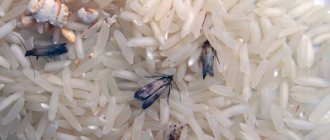A lisp is a speech defect in which there is incorrect pronunciation of hissing and whistling sounds. At the same time, the defect does not in any way affect the understandability of speech and the correctness of its grammatical and logical structure. A speech therapist can help a person figure out how to stop lisp, as well as some tips for working on restoring speech at home.
general information
A lisp is characterized by a violation of the pronunciation of hissing and whistling sounds. A person retains grammar, vocabulary and understanding of the speech of people around him. Pathology develops as a result of various reasons:
- hereditary predisposition;
- tongue mobility disorders;
- a hearing disorder that prevents a person from hearing phonemes correctly;
- accompanying speech changes;
- if a malocclusion is formed;
- traumatic injuries of the oral apparatus, etc.
These factors can lead to the development of a lisp in a child or adult. In this case, the patient’s speech changes in a characteristic way: the pronunciation of whistling and hissing sounds is disrupted, a disorder of tongue movements is noted, and whispering occurs.
Depending on the specific reasons, a person may have a lisp in different ways. In some cases, a speech defect may be barely noticeable, and sometimes lead to a pronounced disruption of communication between people.
Exercises
It is easier to teach a small child to correctly pronounce sounds in another language. This is due to the pliability of the articulatory system, the passion for imitation and the lack of pronounced automatism in speech. Adults require regular training. To do this, there are exercises to consolidate correct pronunciation:
- Contrasting words: mouth – mouse, thing – sing, with – whizz (help to correctly pronounce the dull version of the sound, without replacing it with the Russian analogue C).
- Adaptation of Russian speech: pronounce “composition” and “gap” with the tip of the tongue sticking out (the correct position of the articulatory apparatus is formed using a familiar example).
- Contrasting words: three – free, thought – fought (helps to avoid incorrect pronunciation of a dull sound when replaced with F).
- Singing familiar songs, changing its text to a voiced or voiceless reading of the letter combination th - simple children's melodies are best suited (they force the muscles to get used to the correct position and accept it involuntarily).
- Contrasting pairs: thick – tick (allows you to learn to distinguish the pronunciation of a voiced sound from T).
- Repeat the tongue twisters several times: Thirty-three thousand and thirty thinkers thought thirty-three thousand and thirty thoughts. They are always bothering Father and Mother to do things for them. (forms skills of fast and automatic pronunciation of sounds).
- Contrasting pairs: teeth – teethe (will help to avoid mistakes when reading a voiced sound at the end).
- Sing along to popular songs in English with an abundance of necessary sounds (The Rolling Stones - “Under My Thumb”, Blondie - “One Way Or Another”).
The frequency of home exercises should be at least 3 times a day. You need 5 or more such days per week. This is due to the fact that in ordinary life we do not use new sounds. Therefore, the articulatory apparatus will quickly become unaccustomed to the correct position. Because of this, errors in pronunciation will occur, and a characteristic accent may appear.
Identification of the causes of pathology
Why should all people with a lisp and other speech impediments see a therapist? Often, a speech disorder is associated with organic changes in the oral cavity, for example, a malocclusion. Classes with a speech therapist in this case will have limited effectiveness.
The examination is carried out according to the following algorithm:
- The specialist talks with the person who applied and finds out how long ago the lisp developed, the age of its onset, as well as the factors with which the patient himself associates the appearance of the defect.
- When examining the oral cavity, malocclusion, missing teeth, short frenulum of the tongue, etc. may be detected.
- Speech therapy research aimed at studying phonetics, grammar and formed vocabulary.
- If an organic pathology of the nervous system is suspected, a consultation with a neurologist and diagnostic measures are carried out: computed tomography, magnetic resonance imaging.
Only a doctor should interpret the results obtained. Attempts at self-treatment can lead to the progression of a speech defect against the background of organic changes in the oral cavity or nervous system.
Advice from speech therapists for prevention
Many defects can be eliminated with the help of speech therapy sessions; a lisp is no exception. To make this process go faster and more efficiently, you should follow some tips from speech therapists:
- Carry out articulation exercises regularly. Exercises should involve all elements - lips, cheeks, tongue.
- Develop the respiratory system. It is necessary to engage the lower part of the lungs.
- Practice tongue twisters regularly, choosing those that have sounds that you have problems with. Without articulatory gymnastics, these exercises are less effective.
You need to have the right attitude, it is important to ensure proper rest, eliminate or reduce stress. Do not forget that a lisp is sometimes caused by an incorrect bite and jaw structure. In this case, you cannot do without the help of dentists and orthodontists.
Treatment approaches
Experts know how to get rid of a lisp. To do this, it is recommended to undergo comprehensive correction under the supervision of a speech therapist. The goals of treatment are:
- teach the patient to pronounce sounds correctly;
- ensure the formation of motor stereotypes with language to prevent the progression of speech disorders.
For this purpose, therapy uses: speech therapy exercises, breathing exercises and tongue massage. It is important to note that after starting treatment with a speech therapist, the patient must study independently at home.
If the disorder is identified in childhood, the child can get rid of it by the age of 7-8 years. In this case, a lisp does not lead to any negative consequences for the socialization or learning of children. If speech disorders occur in adulthood, long-term correction measures are required.
Attention! Various factors lead to a lisp. Before treatment, it is necessary to identify possible organic causes for their correction using medicinal methods.
Restoring diction
Impaired diction and a lisp after prosthetics occur in 99% of cases. Some recommendations will help you cope with this. Firstly, for a month after prosthetics, it is recommended to leave the structure in the mouth overnight. Secondly, it is important to do special exercises daily to develop speech.
At first, the prosthesis will greatly interfere with everything; it will be difficult to talk with it, laugh, or open your mouth too much.
What should be done to restore normal diction after prosthetics:
- Read more out loud;
- talk a lot;
- Try to clearly pronounce the sounds s, z, c, t, d, ch, sh, sch;
- Speak tongue twisters.
For most people, following these recommendations, speech is restored within a week. If the patient went without teeth for a long time before making the prosthesis, this period is extended.
Treatment in medicine
A lisp can be associated with various organic causes that require joint treatment with a doctor. When a speech defect occurs in children, a common cause is chronic inflammatory diseases of the nasal cavity and adenoids, which impair breathing. Surgery to remove tonsil tissue growths and drug therapy can eliminate problems with sound pronunciation.
One of the common causes of a lisp is malocclusion of the teeth. It is eliminated by wearing braces or retainers, which allow the formation of a normal structure of the oral cavity. If a person is missing teeth, then prosthetics are performed. Timely correction of problems in the oral cavity in medical institutions allows you to get rid of speech defects and prevent changes in the articulatory apparatus.
Signs in adolescents and adults
The main causes of lisp are:
- poor tongue mobility;
- malocclusion;
- hearing loss and phonemic hearing disorders;
- pathologies of the oral cavity;
- GSD (general speech underdevelopment);
- living in a bilingual family.
The causes of lisps in children and adults can be different. The main causes of this defect in adults are:
- malocclusion;
- short bridle;
- missing tooth or several;
- insufficient tongue mobility;
- head injuries;
- hearing impairment;
- hereditary factors.
An adult should also contact a specialist at the first sign of a lisp, who will take the necessary measures to correct this situation.
Articulation gymnastics
A common cause of the development of a lisp is the incorrect position of the tongue during the pronunciation of the sounds “s” and “sh”. A person can correct such a disorder with the help of speech therapy training. They are based on regular articulation gymnastics. Speech therapists, when working with a patient, give methodological instructions for its implementation.
Before you start practicing, you need to relax your tongue. To do this, you need to run it over your upper lip several times, trying not to strain it during movements. If the feeling of tension remains, then the task must be repeated. The following movements are practiced:
- “Cup” exercise - a person opens his mouth slightly and lifts the front and sides of the tongue, forming a small depression in its center. In this case, the lower jaw should be motionless, and the tongue should not extend outward beyond the boundaries of the oral cavity. At the end of the task, you should try to pronounce the sound “z”. Initially, the phoneme may be unvoiced and similar to “zh”, however, with regular gymnastics this problem can be eliminated.
- The patient, with his mouth half open, sticks out his tongue and places it on his lower lip. When pronouncing “la-la,” he moves the tip from one corner of his mouth to the other. To perform the exercise correctly, you must maintain one position of the lower lip and not strain the muscles of the tongue.
- “Pancake” task - with the mouth half-open, the tongue is slightly pushed forward and flattened as much as possible. After this, you need to lightly tap it with your upper lips, keeping the muscles relaxed. You should do the task until you feel a sense of ease in performing the movements.
- To improve the articulation of the speech apparatus, it is recommended to regularly read a book or newspaper, holding a cork or pen between your lips. This contributes to the formation of correct motor stereotypes and normalization of speech.
- The patient closes his mouth during a conversation, keeping his lips closed, but the upper and lower rows of teeth do not contact each other. In this position, it is necessary to read aloud or tell something to another person. It is important to try to speak so that your speech can be heard. The optimal time for talking or reading is 10-30 minutes with a gradual increase.
- Every person with a lisp needs to begin to establish the pronunciation of the sound “sh” as early as possible. To do this, you need to stretch your lips, clench your teeth and raise your tongue to the palate, but not touch it. At the same time, the patient begins to pronounce the sound “sh”, imitating the hiss of a snake. The best effect is observed when pressing simultaneously with your fingers on both cheeks. Gradually, a teenager or adult learns the correct phoneme with regular practice.
In the first weeks of correction, speech gymnastics should be performed under the supervision of a speech therapist. Such a specialist exists in preschool and school institutions, and also treats speech defects in clinics. After a person masters the technique of performing the exercises, he can continue to perform them at home, periodically visiting a speech therapist.
Symptoms of a lisp
The pronunciation of the sounds “sh, zh” is automated at about 4-5 years of age, often without the help of a speech therapist the process does not proceed correctly. These sounds are distinguished by their sonority, “Sh” is unvoiced, and “Zh” is voiced, the violation is most often paired. “Ch” and “Shch” are violated less frequently; they are usually replaced with “honor” or “shchs” or pronounced with rounded lips. To pronounce “Sh” and “Zh” correctly, the tongue is bent into the shape of a wide bowl and raised slightly upward.
The lateral edges are pressed against the molars. The teeth themselves are close to each other, the lips are rounded. If the tongue does not rise enough, a lisp appears. This may be due to a violation of muscle tone, when the tongue is too flaccid or, on the contrary, too tense. In this case, speech therapy massage may be indicated.
A lisp can occur due to an incorrect bite. This is especially noticeable if there is a large distance between the upper and lower teeth, and they cannot completely close. This is called an anterior open bite or prognathia.
In addition to lisps, there are also:
- skipping “Sh”, “Zh” - “zhuk” - “uk” or “apka” instead of “hat”;
- replacing these sounds with “S”, “Z”.
If a five-year-old child does not pronounce these sounds correctly or replaces them with others when changing baby teeth to permanent ones, there is a chance that the problem will resolve itself over time. However, if the dentition has already been replaced by permanent teeth, and the baby still pronounces sounds incorrectly, the lisp will not disappear without working with a specialist.
The lisp of Sh and F can manifest itself in different ways:
- Labial-dental. The lower lip is adjacent to the upper incisors, so a sound similar to F (cat-kofka) appears.
- Prizubny. The tip rests against the edge of the teeth, which leads to the appearance of the T sound (cat-cat).
- Side. The tip of the tongue or most of it goes to the side and a clapping sound occurs.
- Buccal. The child's cheeks are puffed out, the tongue lies at the bottom of the cavity. This is how noise appears during pronunciation.
- Nasal pronunciation. There is a noticeable nasal sound, as with a stuffy nose. This occurs due to insufficient functioning of the soft palate.
- Soft Sh. The sound is very soft, close to Shch.
If adults suspect a lisp, when the child turns 5 years old, it is advisable to go to see a speech therapist. A specialist must determine whether it is a lisp or another problem with articulation.
Breathing exercises
Poor and shallow breathing, disturbances of which occur during a conversation, lead to various speech defects, including a lisp. To eliminate the cause, it is necessary to perform exercises to develop speech breathing:
- “The hissing of geese” - a person places his feet shoulder-width apart and rests his hands on his hips. Gradually he leans forward, stretching his neck and pronouncing the sound “sh” during a long exhalation. The exercise is performed slowly - from 3 to 10 seconds. The number of repetitions is 5-6.
- Improved speech articulation is observed when performing “mower” gymnastics. The starting position of the legs is similar to the previous exercise. In this case, your arms should be bent at the elbows and moved forward. Fingers clenched into a fist. When turning the body left and right, a person imitates movements with a scythe, waving his arms widely and saying “zhuk-zhuk!” The movements should not be made quickly, their speed should be comfortable. The required number of repetitions is 5-7 times.
- A second person is required for the “sawing wood” exercise. You should stand opposite him face to face. Feet should be shoulder-width apart, however, the left leg is slightly forward. Both participants take each other’s hands and alternately bend and unbend them, imitating the movements when sawing firewood. During the exercise, you must pronounce the sound “zh”. The pace should be moderate. The task lasts 30-60 seconds.
- The “locomotive” exercise can be performed at any age. A person walks in small steps around the room or in place. The arms are bent and move back and forth. While moving, the person says “chug-chug,” imitating the sound of a train. The duration of the task is up to 1 minute.
Breathing exercises are performed every day for 3-4 weeks. The exercises should be removed after speech correction and consultation with a speech therapist.
If a lisp is associated with an incorrect bite or other changes in the oral cavity, then speech therapy exercises and breathing exercises have limited effectiveness.
Diagnostics
An appointment with a doctor will help determine the cause of speech defects and select adequate treatment. The problem is complex, so to make an accurate diagnosis, they resort to the help of a defectologist, speech therapist, neurologist, psychiatrist, otolaryngologist and dentist.
A consultation with a defectologist includes: analysis of the process of sound reproduction (the patient is asked to pronounce a certain exercise), mobility and placement during the production of sounds of the tongue (including the body and tip of the uvula, soft palate, cheeks).
An otolaryngologist examines: the condition and functionality of the middle and inner ear, hearing acuity, patency and functionality of the nasal passages and sinuses.
A psychologist and a neurologist evaluate: the patient’s nervous state, the absence or presence of severe stress, fear, and individual characteristics of mental development.
The dentist examines: The presence of dental pathologies (lack of teeth, gaps, unevenness). Sometimes after prosthetics, speech is immediately restored. Development of bite (normal or pathological). This dental problem is often the cause of a lisp.
Modern methods make it possible to remove a lisp. Children and adults put off visiting specialists, although several procedures have already brought positive results for speech.
Using tongue twisters
Speaking tongue twisters is an effective method for eliminating a lisp. Speech therapists identify a number of tasks for practicing the sounds “ch”, “sh” and “sch”. Initially, a person may have difficulty pronouncing them, but you should not stop doing the exercises.
Tasks for correcting “sh” and “sch”
The tongue twister “cuckoo bought a hood” allows you to form the correct pronunciation of the sound “sh”. To do this, you need to stretch your lips forward and raise the tip of your tongue to the hard palate and teeth without touching them. The tongue should be wide, not narrow. Its edges touch both rows of teeth, blocking the exit of air on the sides of the mouth. The air should only move forward, forming the correct “sh” sound.
A tongue twister for improving the pronunciation of the sound “sch” is as follows: “a predator is prowling in a grove - a predator is looking for food.” It should be pronounced quickly, but maintaining the correct phonetics. The speed is gradually increased, which allows a person to normalize conversational speech.
Working on the “ch” sound
The phoneme “ch” is classified by speech therapists as complex. To pronounce it, quite complex articulatory movements are required: the lips move forward and are rounded, the teeth are closed, but there is a small gap between them. The flattened tip of the tongue rises to the palate and is located near the upper teeth. At the moment of exhalation, a small gap between the teeth forms the sound “ch”.
Tongue twisters for improving the pronunciation of phonemes are as follows: “we have golden chicks in our little stove”, “the eccentric is hiding a suitcase under the sofa.” During training, a person gradually speeds up their pronunciation, ensuring that the correct sound is maintained.
A lisp is a common speech defect that can occur in children and adults. Speech impairment is not accompanied by grammar violations and a decrease in vocabulary, and therefore does not lead to negative consequences for a person. If you seek help in a timely manner, the speech therapist conducts the necessary examination and consults with a doctor. Selected speech therapy correction measures, as well as medical approaches to treatment, make it possible to normalize the pronunciation of individual phonemes and get rid of a lisp.
Where to begin?
Tongue exercises should be done correctly. All exercises must be performed in a certain way, and the main condition is that the tongue should be relaxed. During classes, parents should monitor the correct pronunciation. The baby needs to try to get used to not sticking his tongue out in front of his teeth and not putting it between them.
Charging should be done in a relaxed atmosphere. When everything happens easily and without pressure from adults, the child feels calm. Understand for yourself that there is nothing wrong with the fact that he began to lisp, do not make a tragedy out of it and be sure to praise the baby at the slightest positive results.
Techniques to consolidate the result
To ensure that correct pronunciation does not disappear in stressful situations when communicating with foreigners, it needs to be consolidated. To do this, at least once a week you should re-read the list of words and phrases:
- Think, thought, three, thing, death, tooth, tenth, thank, health, through.
- That ,the, bathe, with, them, leather, another, mother, they, together.
- Three therapists threw three thermometers in three thick thickets of thorny thistle.
- These brothers bathe with those brothers, those brothers bathe with these brothers.
- Thank you very much.
- I think Beth is traveling north on the path.
- Month, wealth, thrall, thong, thrum, faith, thrust, kith, thong, fourth.
- This, seethe, those, then, there, breathe, brother, lathe, other, worthy.
- I am going to take a bath, not bat.
- This is beautiful.
- I like your mouth, not I like your mouse.
- Thank you for driving back and forth this month.
To learn to speak a foreign language correctly, you don’t have to go to a country with native speakers. It is enough to do the exercises daily and listen to competent speech. You can do this from the comfort of your home by watching movies and enjoying songs with good pronunciation.
The earlier the better!
It is believed that if a child has a lisp before the age of five, this should not be a cause for concern. It might even seem cute. Now imagine that this is a 16-year-old girl at school, an adult woman at work. Most likely, she will not be comfortable communicating with people and making acquaintances. The same goes for men. A lisp affects your future lifestyle and prevents you from achieving your goals. A person is simply embarrassed to speak, express opinions and ideas.
It is naive to expect that the defect will disappear on its own by 5-6 years. If this does not happen, too much falls on the child. After all, he is going to go to school. Then the children’s normal day is interrupted by visits to dentists, speech therapists, speech pathologists and countless home workouts. There are all the prerequisites for emotional exhaustion: stress, overload, demands from adults. The child may be afraid that his peers will laugh at him. The sooner treatment begins, the better.
How to make a “cup”?
This activity may cause some difficulties. To make the task easier, parents should try to explain to the child as precisely as possible what is required of him.
- First, we show the “cup” with our hands. We put our palms together, as if trying to hold some water in them. To make your visualization clearer, you can go to the bathroom and actually take some water into your hands.
- Now we show the child how to make this “cup” with his tongue. Let your child repeat after you. In order for him to start doing this with more enthusiasm, you can simultaneously pronounce hissing consonants.
- Make sure that the child tries to evenly raise the sides and tip of the tongue.
It may not work out the first time. Dont be upset. Translate everything into a game, but at the same time insist on the correct execution.









